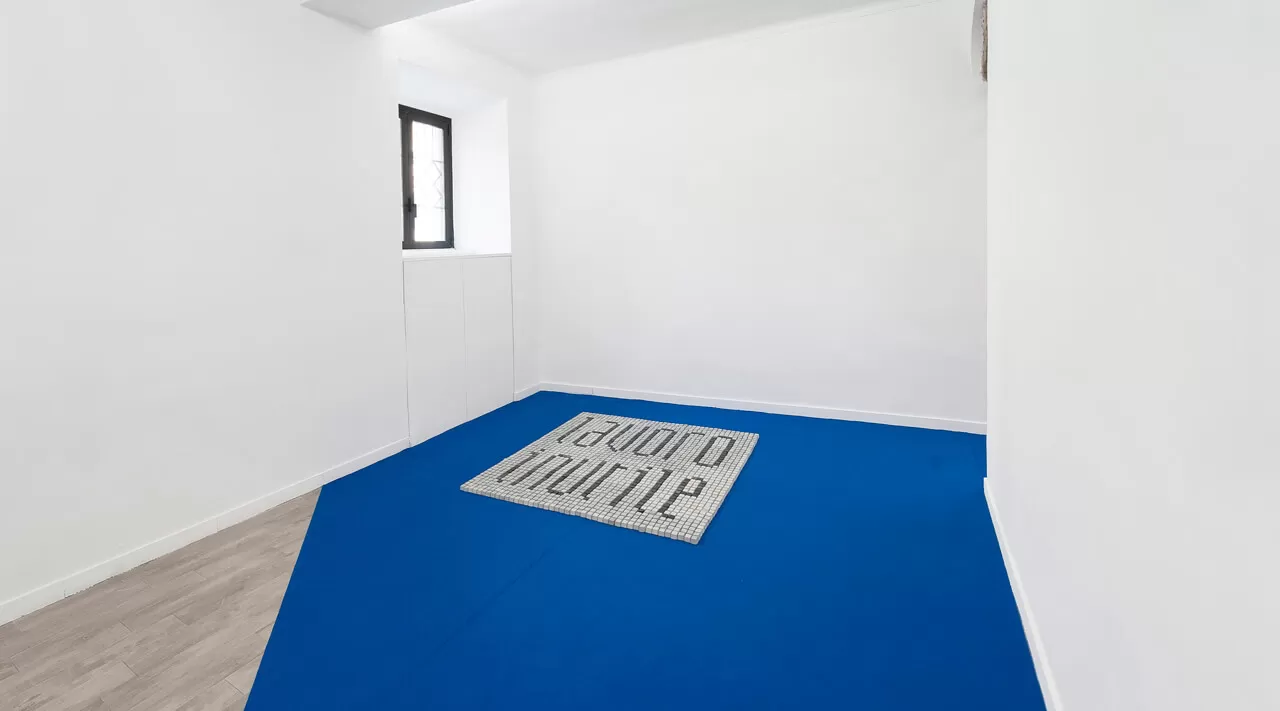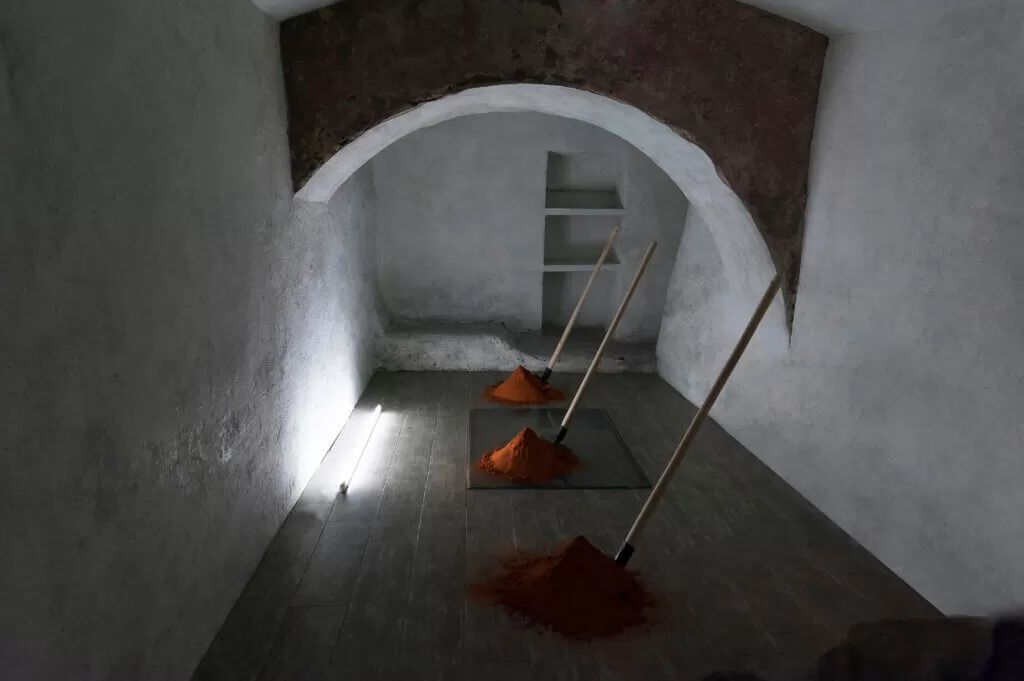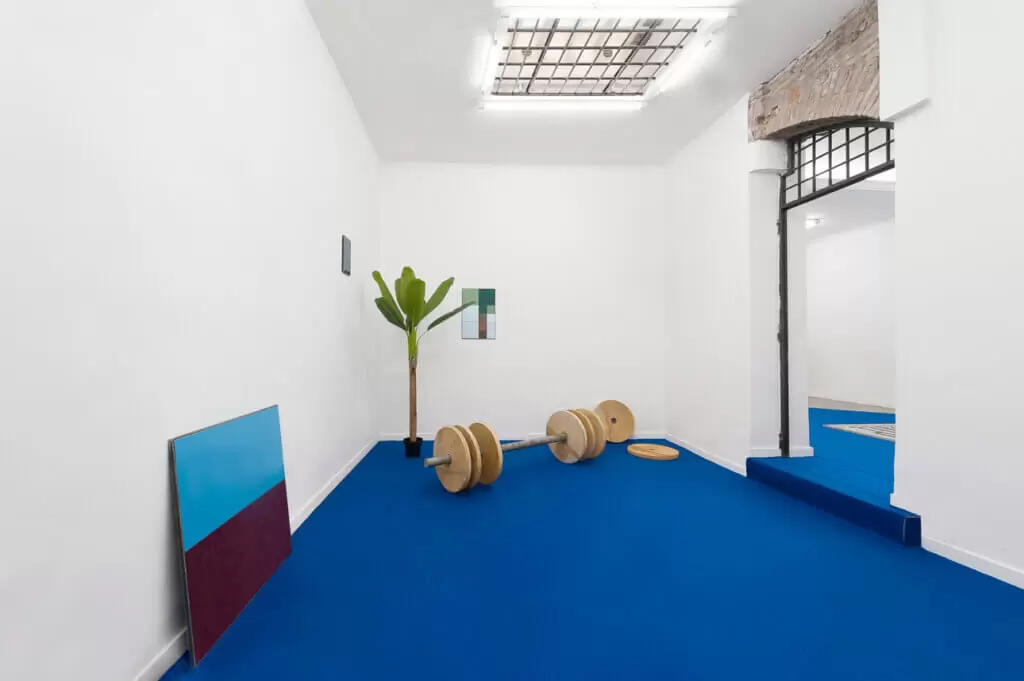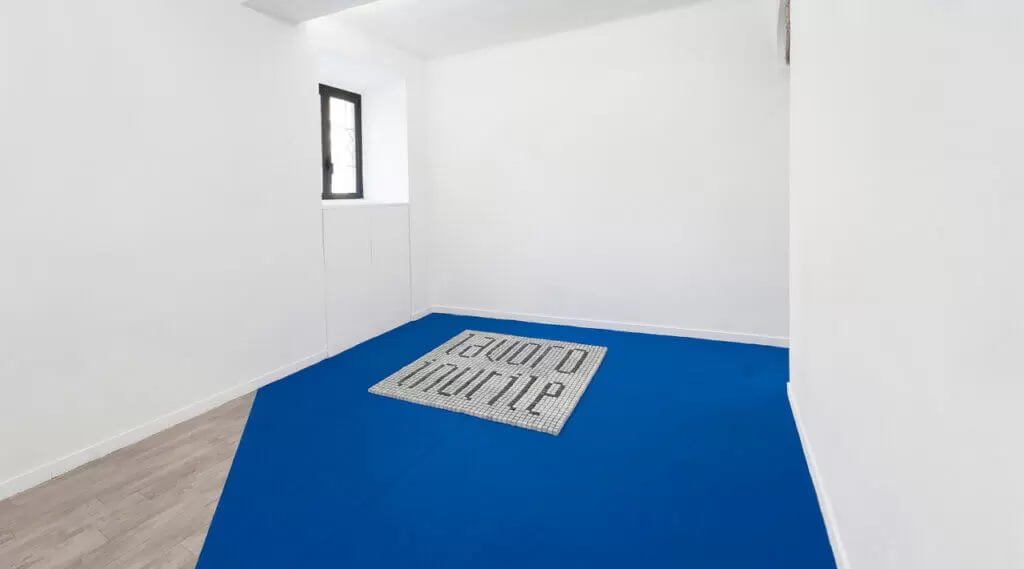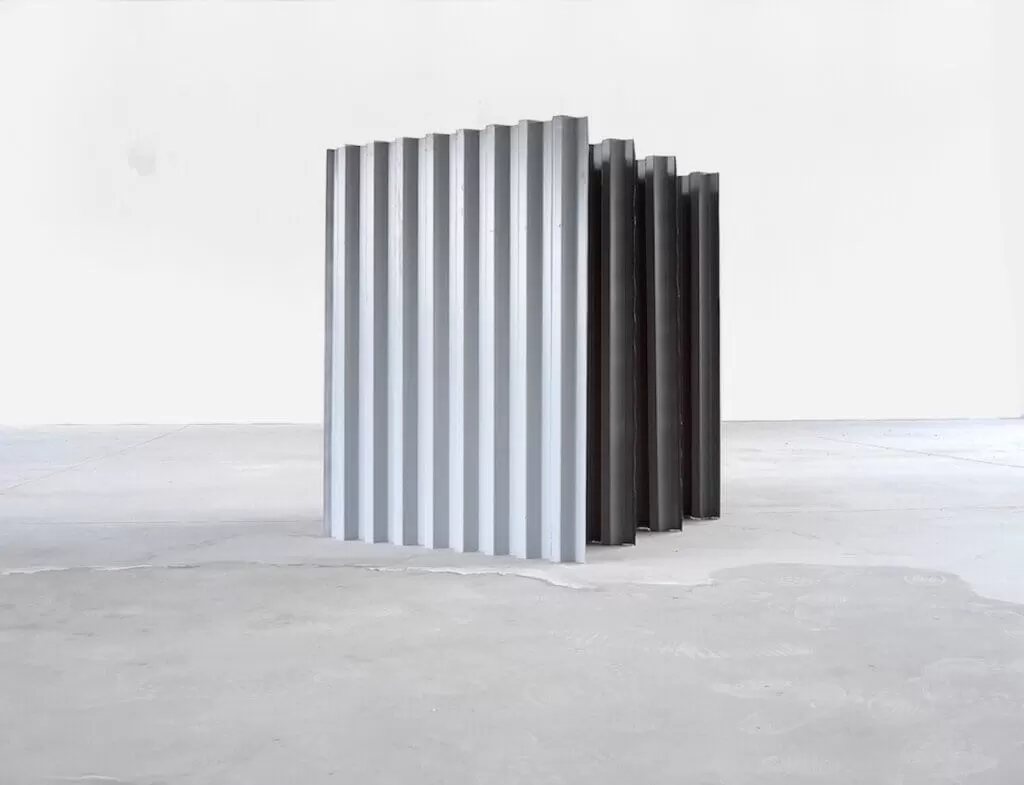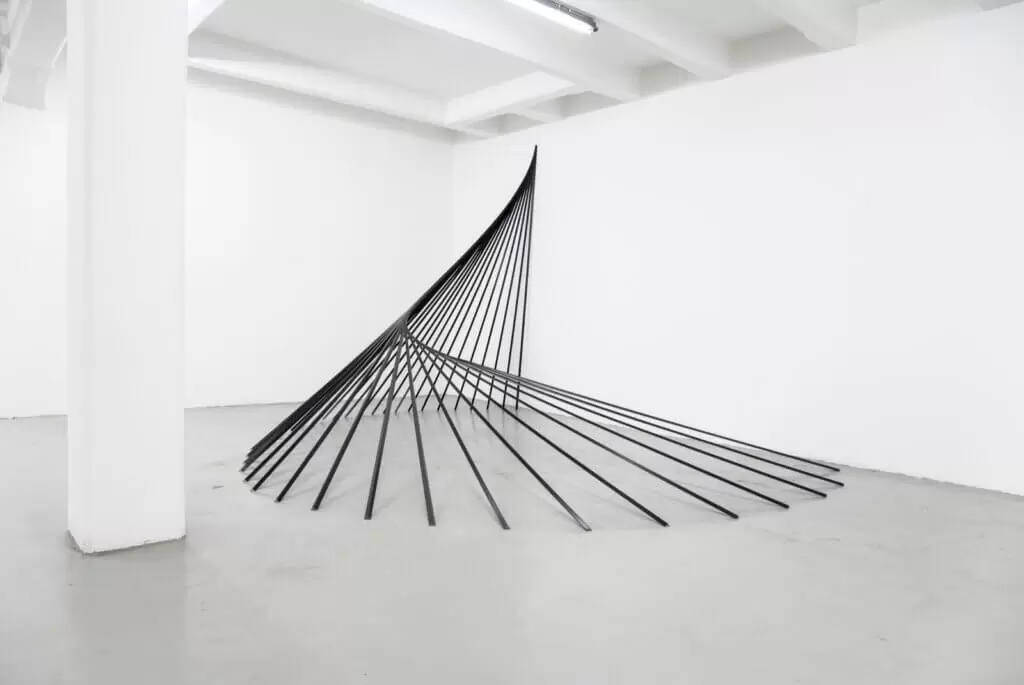Italian artist Jonathan Vivacqua is well-known for his exceptional installations indulged in spacious settings. His relationship with the world influences his work as he strives to comprehend human existence representing observations within a fusion of constructed elements with reminiscent essences of Serra.

My inspiration is the urge to relate to the world: as every human being I question reality and my personal way of trying to understand human existence is through my practice
Jonathan Vivacqua
Vivacqua conceives minimalistic structures which encapsulate architectural principles that push the boundaries of space with the pursuit of discovery, inviting the viewer’s attention. The desire to investigate is the innovation which progresses his practice. In this interview, we learn more about his background, artistic process and more.
Q: For those who don’t know you, can you please introduce yourself
Jonathan Vivacqua: My name is Jonathan Vivacqua, I’m 34 years old and I’m an artist.
I live in Northern Italy: I grew up there, roughly one hour away from Milan and twenty minutes from Switzerland. But, in fact, my roots come from the South of the country, from the seaside that my parents had to leave, just like many others did, to seek employment elsewhere. They moved up North, in an area renown in the whole country for its craftsman tradition and for the incredible dedication to labour shown by its people.
When speaking about my artistic research I always start from my origins and the land I belong to; I think this is crucial to understand my practice. My path has been extremely linear: since I was a child I always thought I wanted to become an artist, I learnt how to draw before I could write and that has always been my natural way to express myself.
I graduated in Art School and then went ahead and studied at the Academy of Fine Arts of Brera in Milan, but I always kept working in construction sites, both for necessity as well as a personal attitude.
Q: What is your inspiration, and why do you do what you do?
Jonathan Vivacqua: My inspiration is the urge to relate to the world: as every human being I question reality and my personal way of trying to understand human existence is through my practice. The necessity of seeking new answers is the impulse that moves my work forward.
Q: Can you tell us about your creative process?
Jonathan Vivacqua: My creative process is quite immediate: I naturally retain ordinary images and details from my everyday life and then try to unravel their hidden significance. I think it is in the mundanities that we should look for the deepest answers. It is in the most common objects that I find the root of my artistic language.
Q: Your works are always clean and minimalistic. Can you tell us the reason behind this?
Jonathan Vivacqua: It is true that my works can be strongly related to Minimal, mostly because I rely on subtraction to reach the essential form of what I want to present. It is something that naturally attracts my attention.
Everything started from a sort of exercise in style I begun doing in building sites: I found there a fascinating chaos full of unexpressed possibilities; various pieces of materials were left laying around, discarded and forgotten. I wanted to put them on a pedestal and bring them outside of their natural habitat, show them in an exhibition and give the people the possibility to see them under a different perspective and rediscover them.
Whenever I find myself trying to solve and artwork it is not the endless reasoning but a sudden, bright intuition that clears the situation. In the end, I always think that a piece should grasp your attention when you least expect it, instinctively, before knowing what you’re looking at.
Q: What was the first piece of Art you made that cemented your path as an artist?
Jonathan Vivacqua: I think it is an old piece I did while I was still studying at the Academy; it was one of the first I’ve ever exhibited and it wasn’t very successful at the time to be honest. I was following a painting course and the lessons were held inside a deconsecrated church in Milan; every student, taking turns, was invited to install a work inside the church just before the lesson.
The Academy had to install a protective net inside the building due to the unsafe conditions of the ceiling: one morning before class, I climbed the above the net with the help of two classmates to install my piece, a 3×2 m2 instruction manual of the church. My idea was to stage a sort of surreal situation where the church itself decided to let the manual fall from the roof onto the net right above our heads, to give us its own idea of its designated use.
Today I remember that moment and, despite recognising how my work was still very green at the time, I still like how I was able to force the people to look up, a simple gesture that we often forget to do. Moreover, I think that my stunt from that day still influences my being always able to find a way despite the constrictions of a material or an installation. I feel able to bend their rules to give them a life of their own.
Q: What was your most memorable exhibition, and why?
Jonathan Vivacqua: “Lavoro inutile” at White Noise in Rome. I’m not sure it will be my most memorable exhibition, but I’m sure it will be the more significant for the evolution of my work. It opened during a very hard time for us all, a moment of historical changes and radical evolutions. In this show I charged every piece with a strong human presence that I always tried to push away since then.
Q: What do you think about the current state of the art world?
Jonathan Vivacqua: I consider the art world not as a system but more as a passage. The role of the artist is to get inside and immediately head to the exit.
Q: What role does the artist have in society?
Jonathan Vivacqua: The artist plays a fundamental role in society, he observes. He’s both an insider and outsider and his hybrid view is a strong driver able to ignite changes and create new visions.
Q: Which artists have caught your attention in the last five years?
Jonathan Vivacqua: Needless to say I will always be in love with Minimal artists such as Carl Andre, Frank Stella, Donald Judd etc. Their work will always have an incomparable strength and a bold physical presence that allows the viewer to live a powerful personal experience with the art piece.
I have an endless number of colleagues for whom I have great respect but the list would be too long to be listed in this interview.
Q: What’s next for you as an artist?
Jonathan Vivacqua: I want to keep on starting new projects and hopefully achieve the world piece. Otherwise I’ll just drop everything and become a rock star.
Q: Lastly, what does Art mean to you?
Jonathan Vivacqua: That’s a tough question and we could go on forever talking about it. I normally use the word “art” to define all those things I cannot determine otherwise. Art is a form of expression activated by unexpected and indefinable reactions; why does it happen it will forever be a mystery. What I think is crucial is the consciousness and awareness of the artist. We should always work keeping in mind our present historical moment.
https://www.instagram.com/jonathanvivacqua
https://www.instagram.com/whitenoisegallery/
©2020 Jonathan Vivacqua, White Noise Gallery


